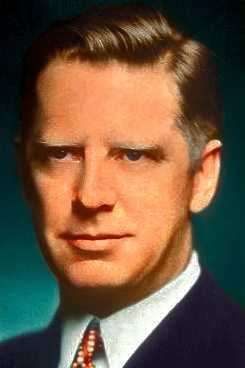The Wilmington Morning Star (August 22, 1944)
AMERICANS STORM ON ROCKET COAST
Seine crossed twice near Paris; Germans fleeing French capital
U.S. soldiers go across historic river near scenes of World War I battles
SHAEF, London, England (AP) – (Aug. 21)
U.S. troops stormed toward the rocket coast of France tonight after planting bridgeheads across the Seine both northwest of revolt-torn Paris and southeast of the city near the Marne battlefields of the World War I.
The Americans crossed the Seine near Fontainebleau, which is 55 miles southeast of Belleau Wood, where Americans halted the Germans in the Second Battle of the Marne in June 1918, and less than 30 miles from the area of the First Battle of the Marne where the French and British checked the German drive in September 1914 – a drive which had carried to within 17 miles of Paris.
“The end of the war is in sight,” declared Gen. Sir Bernard L. Montgomery in a triumphant message to the four Allied armies under his field command in recognition for their “definite, complete and decisive victory” already achieved in northwestern France.
The U.S. 3rd Army, striking across the Seine 25 miles northwest, lent emphasis to his words as it fanned out and threatened to drive the German 15th Army and the battered 7th Army back to the borders of the Reich or roll them up against the sea.
The Berlin radio said the Americans enlarged this bridgehead “in small measure” and were attacking with strong forces “continuously strengthened by bringing up new troops.”
The U.S. 1st, the Canadian 1st and the British 2nd Armies were herding the remnants of the enemy’s 7th Army before them west of the Seine, where elements were crossing – some in the very barges in which in their days of victory they looped to invade England.
The gate to Paris itself seemed open, with patriots fighting the Germans inside the capital and mobile U.S. patrols ranging virtually unopposed around Versailles, 100 miles from the city’s heart.
Allied reconnaissance pilots from seats above the capital watched Germans flee the city in such a tremendous exodus that they were bumper to bumper in a road east of Paris.
Only the rain and clouds that again plagued Allied air forces protected these highway targets from a storm of bombs and shells.
Far back of this swift-moving front, some 10,000 Germans left behind by the retreating 7th Army writhed in the Argentan trap of Normandy, and in the parade of prisoners coming out of the shell-churned pocket were three generals.
It was announced that these were Gens. Elfeidt, commander of the 84th Corps, Badinsky, commander of the 276th Infantry Division, and Menni, commander of the 84th Infantry Division. Three complete field hospitals were also captured.


